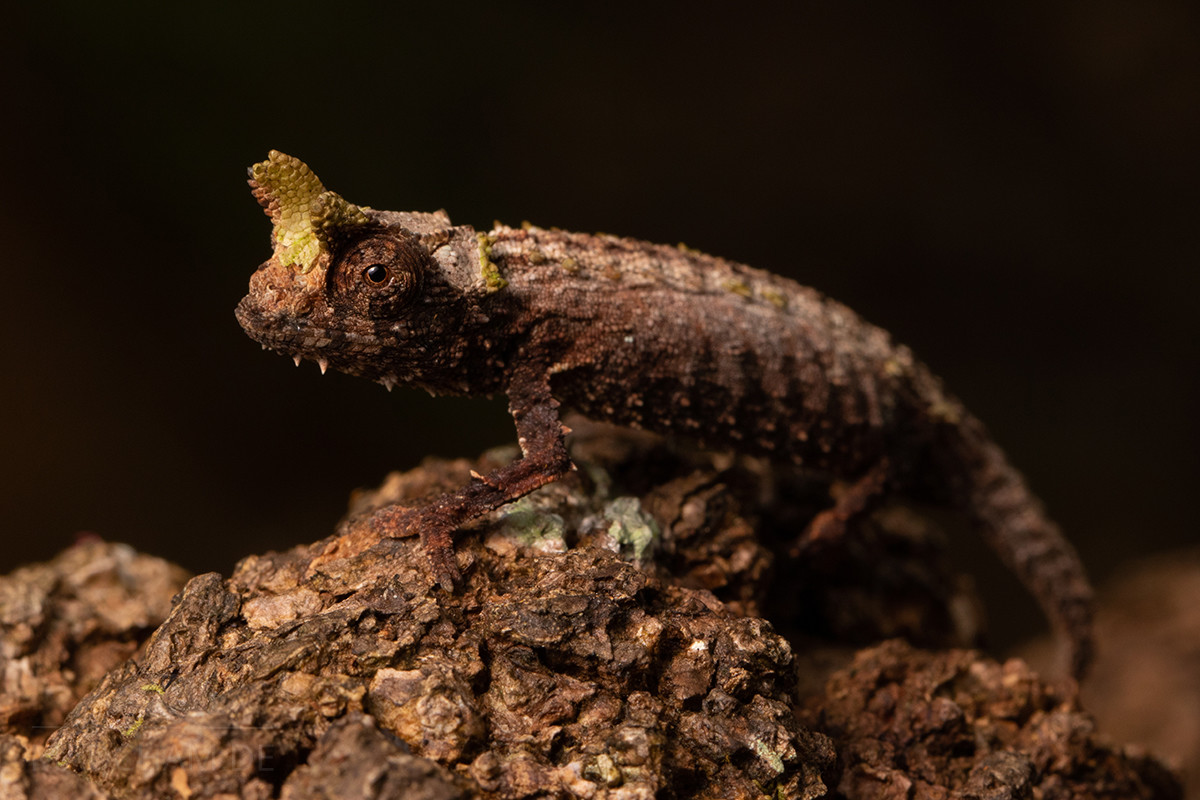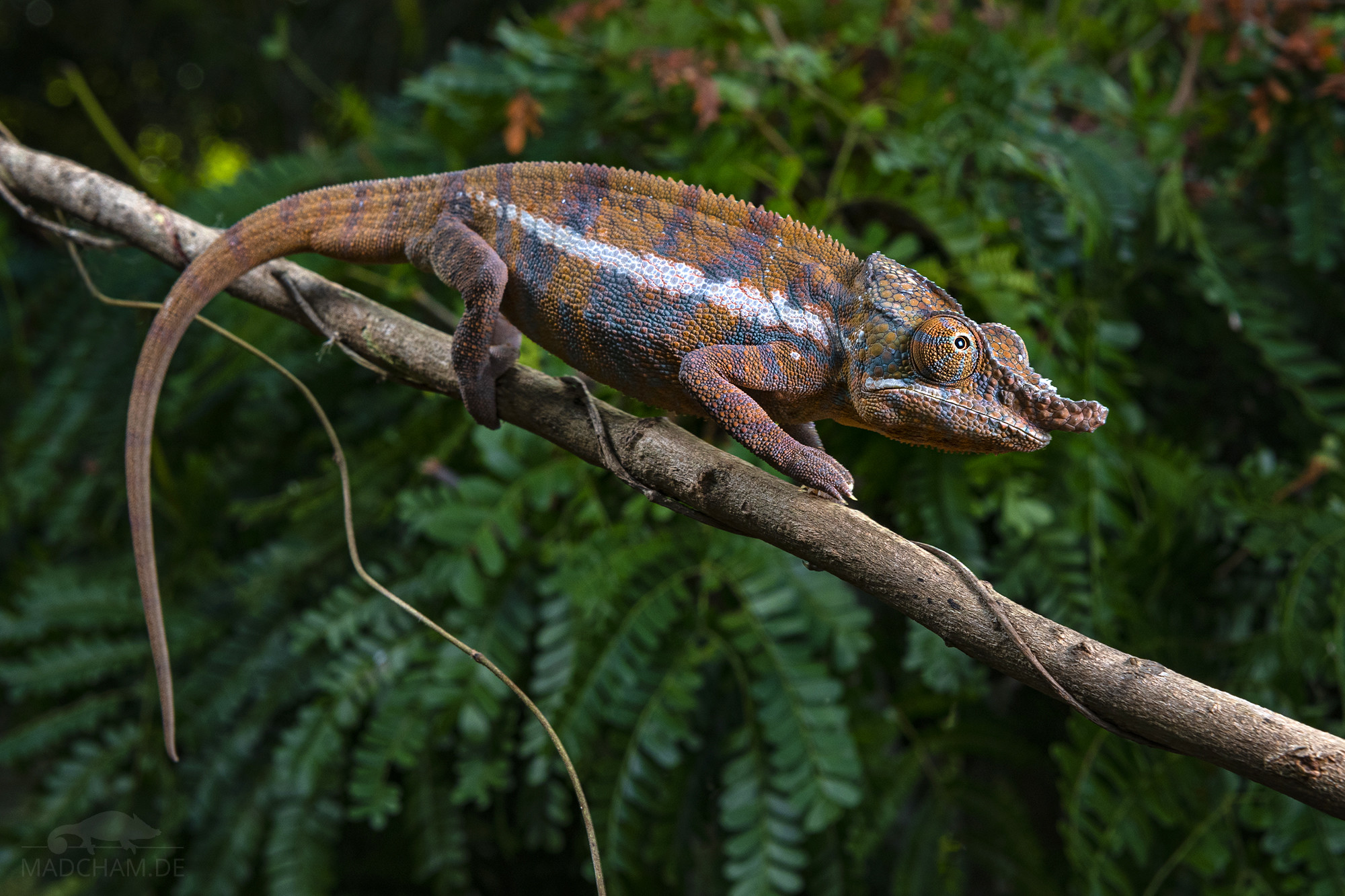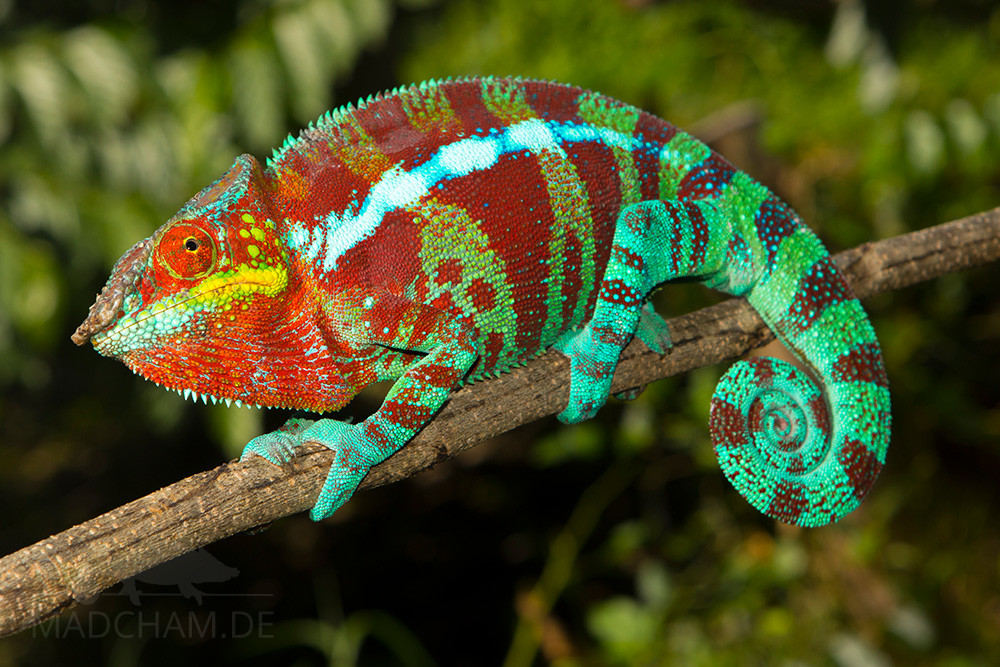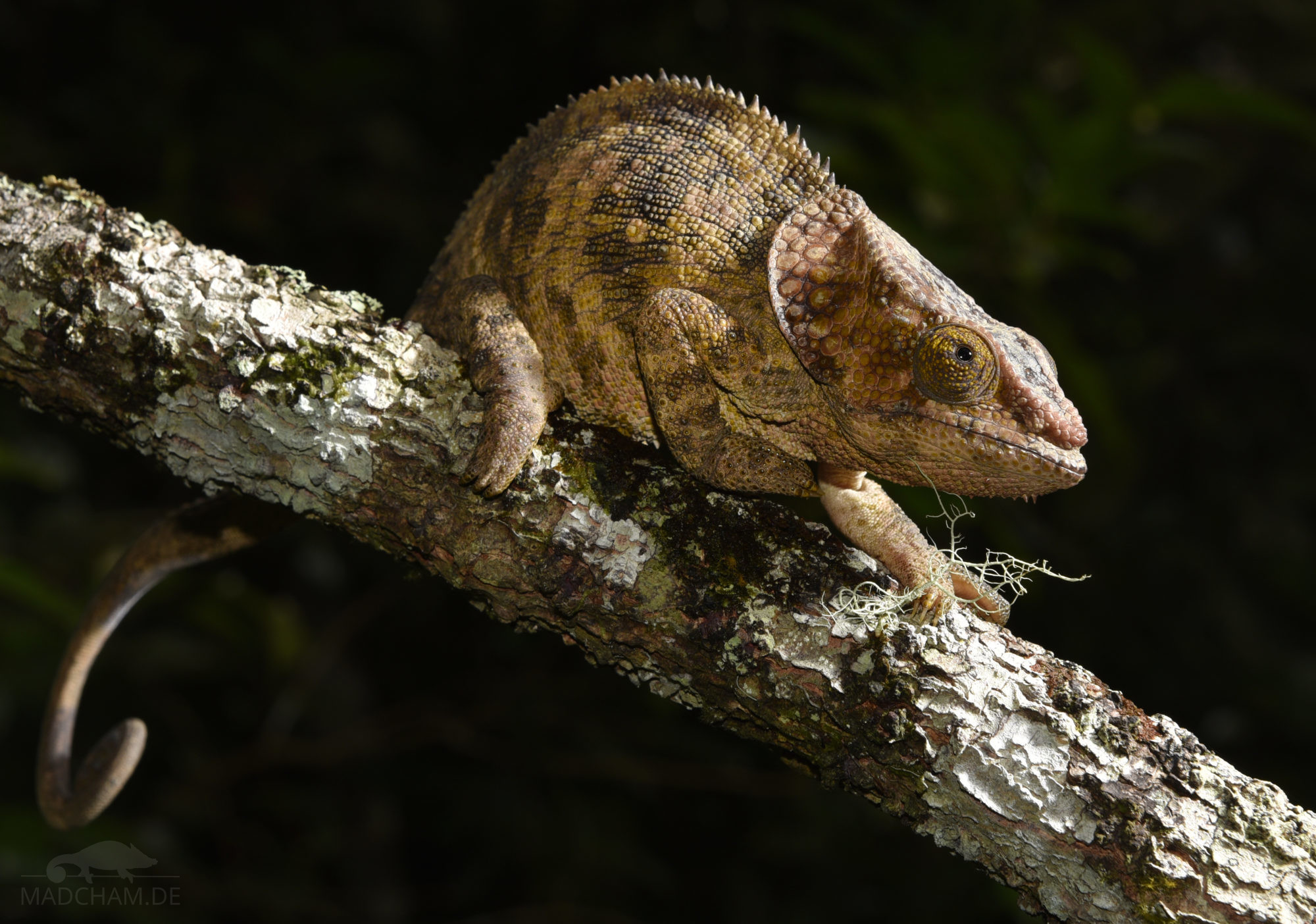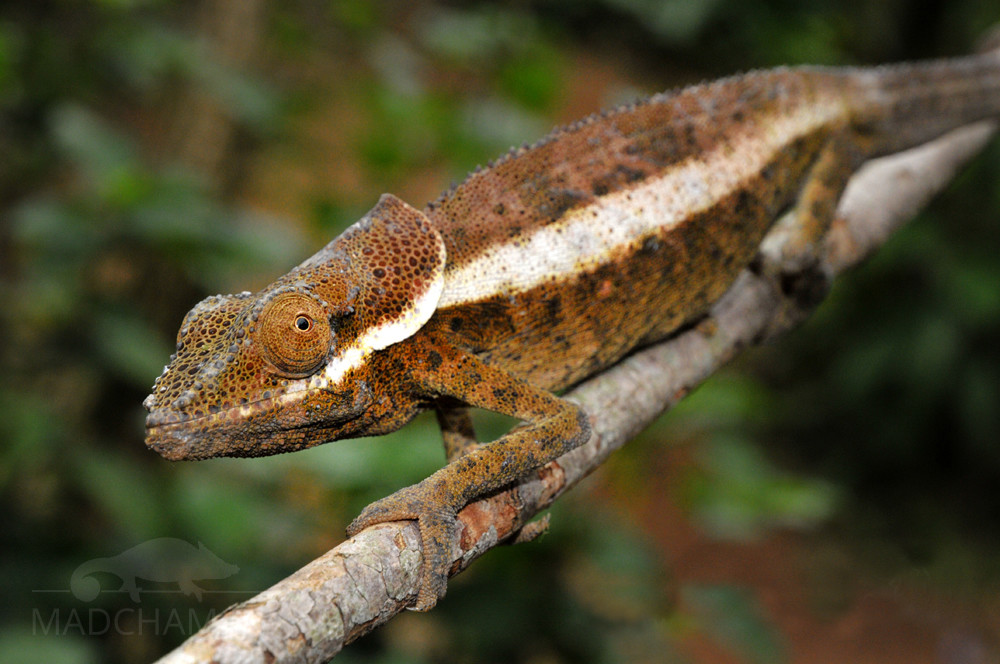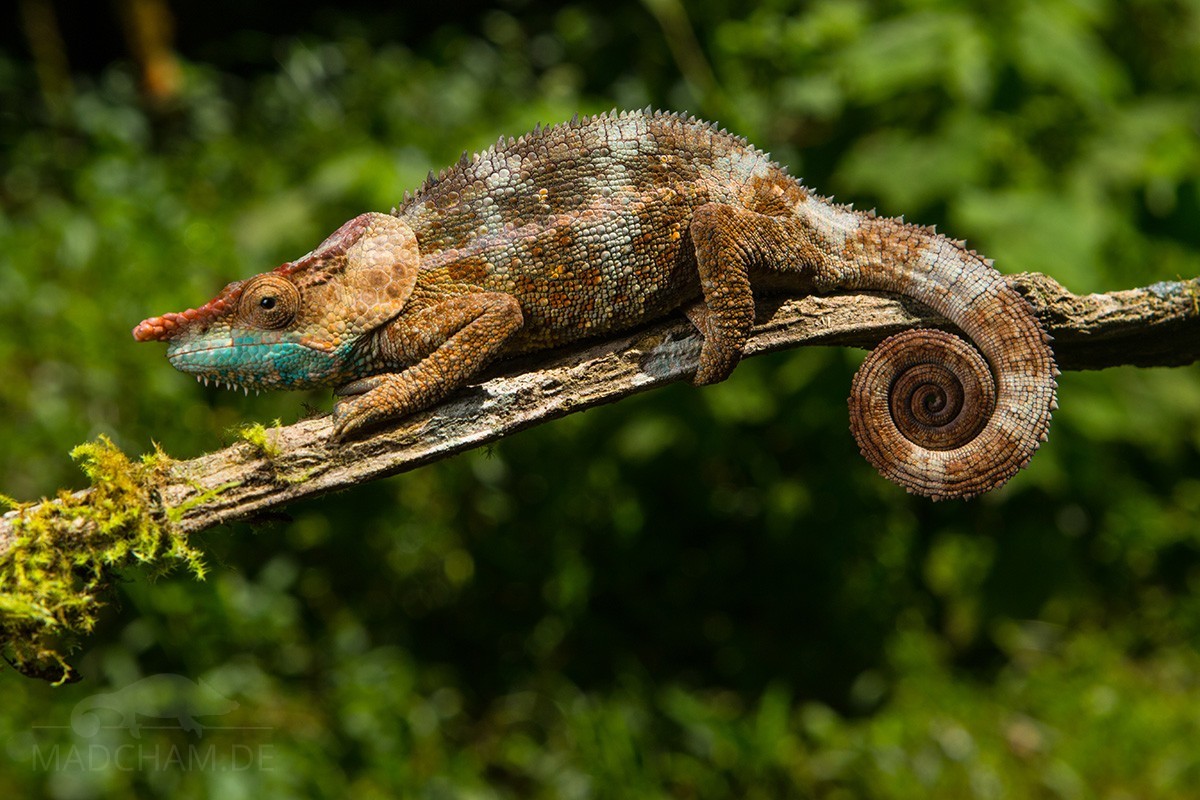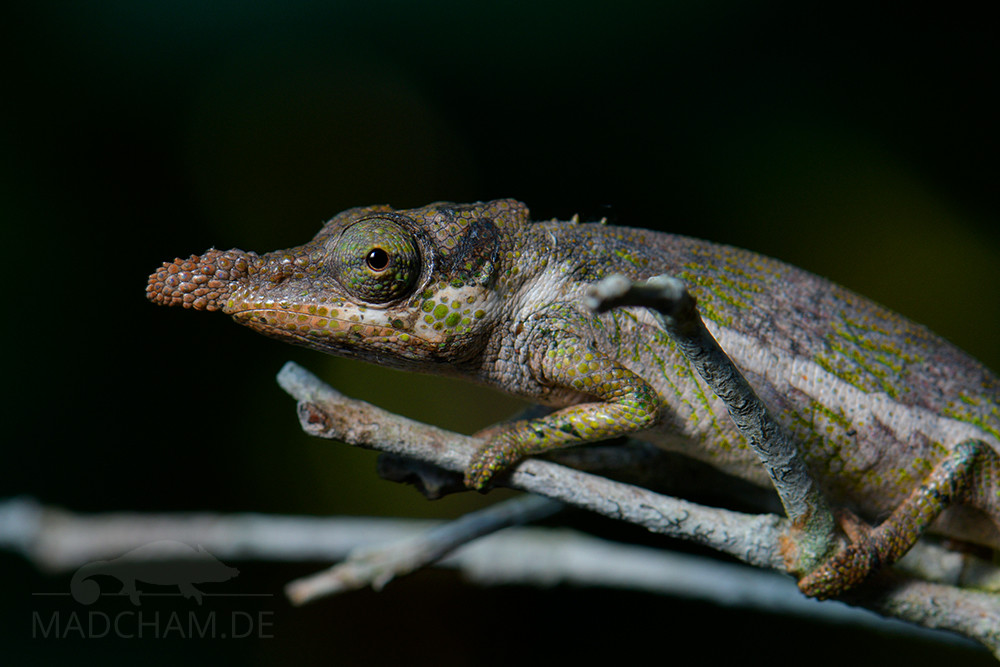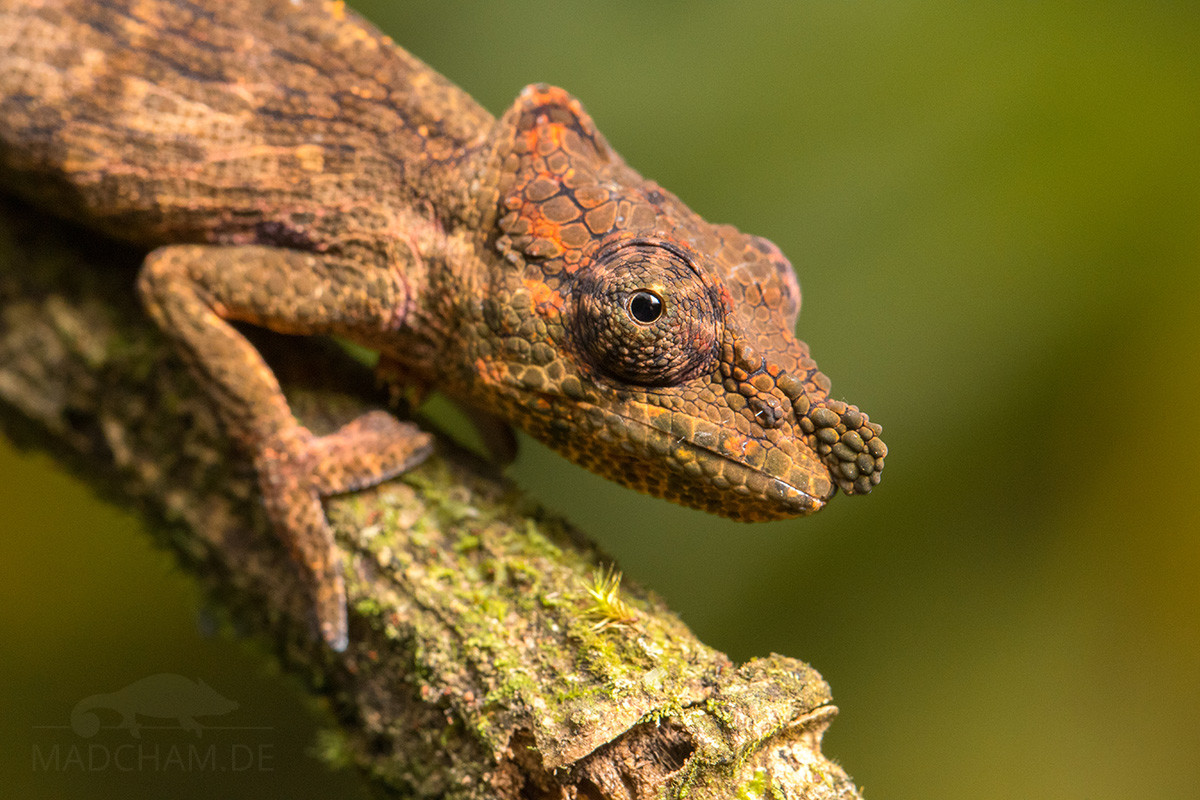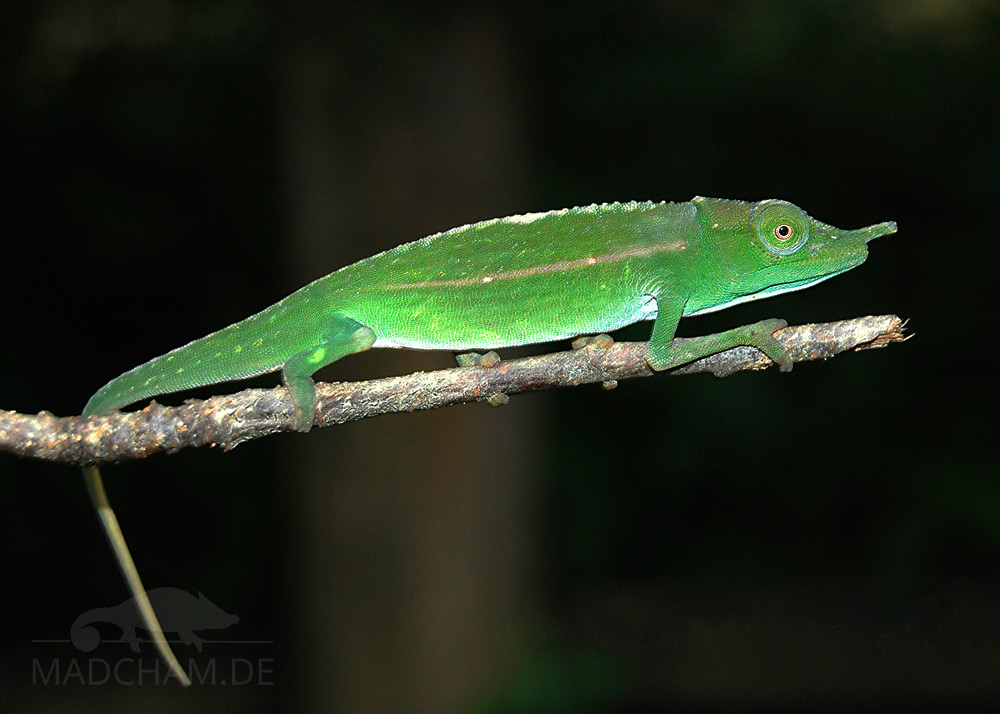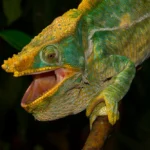Brookesia betschi
First description: Brygoo, Blanc & Domergue, 1970 Origin of the species name: Édouard-Raoul Brygoo, Charles Pierre Blanc and Charles Antoine Domergue of the then Institut Pasteur in Antananarivo, Madagascar dedicated the species to Jean-Marie...
Furcifer angeli
First description: (Brygoo & Domergue, 1968) Origin of the species name: The two zoologists Édouard-Raoul Brygoo and Charles Antoine Domergue of the Natural History Museum in Paris (France) named the species in honour of...
Local form Ambanja
Distribution of the local form Ambanja: Ambanja is located in northwest Madagascar in region Diana and is one of the largest cities there with about 40.000 inhabitants. The national road RN 6 leads directly...
Calumma brevicorne
First description: (Günther, 1879) Origin of the species name: The German zoologist Albert Carl Ludwig Gotthilf Günther, then director of the Zoological Department of the Natural History Museum of London (Great Britain), borrowed the...
Calumma cucullatum
First description: (Gray, 1831) Origin of the species name: The English zoologist John Edward Gray was very brief in his description of this chameleon species: it consists of just keywords instead of a coherent...
Calumma crypticum
First description: Raxworthy & Nussbaum, 2006 Origin of the species name: Christopher J. Raxworthy from the American Museum of Natural History, New York (USA) and Ronald A. Nussbaum from the University of Michigan, Ann...
Rearing offspring
When you successfully mated your chameleons, the female laid her eggs also successfully and egg incubations went well, it is time for the juveniles to hatch and thus you have to rear the offspring....
Calumma emelinae
First description: Prötzel, Scherz, Ratsoavina, Vences & Glaw, 2020 Origin of the species name: David Prötzel, Mark D. Scherz and Frank Glaw from the State Zoological Collection Munich (Germany), Fanomezana M. Ratsoavina from the...
Calumma fallax
First description: (Mocquard, 1900) Origin of the species name: The zoologist François Mocquard of the Natural History Museum in Paris (France) borrowed the species name from the Latin fallax, which means “deceptive” or “misleading”....
Calumma furcifer
First description: (Vaillant & Grandidier, 1880) Origin of the species name: The French zoologists Léon Louis Vaillant and Guillaume Grandidier worked together in the French Zoological Society on various publications. They named this chameleon...

